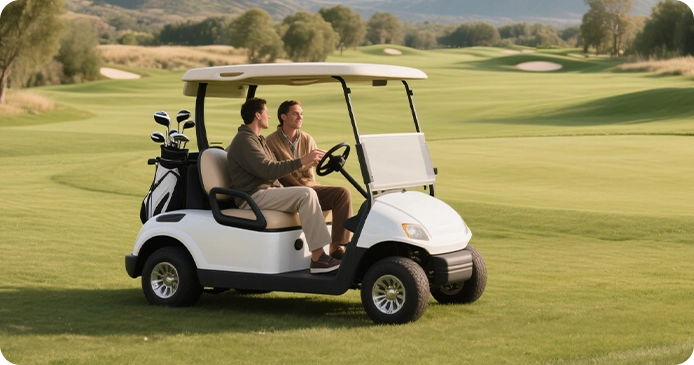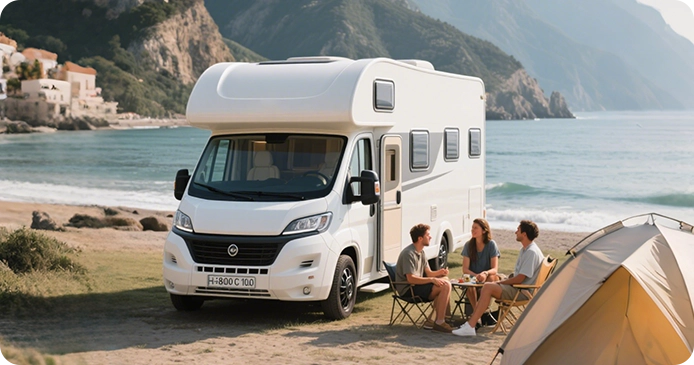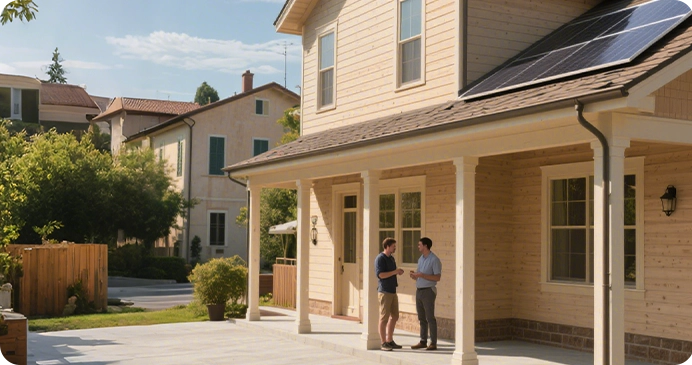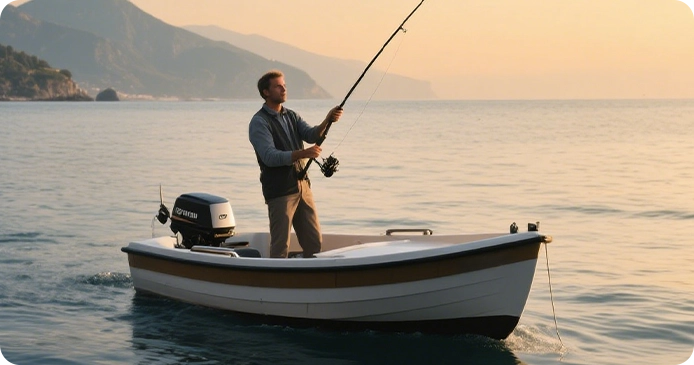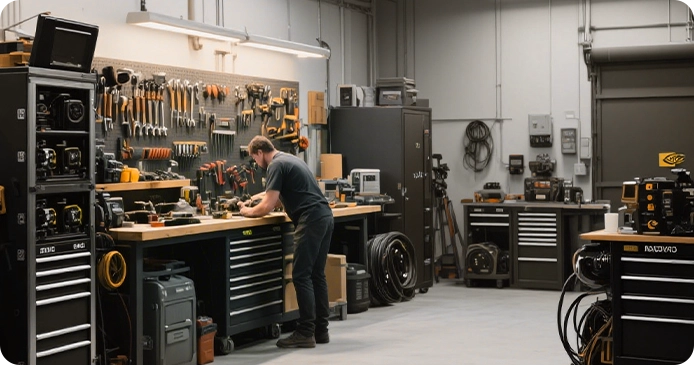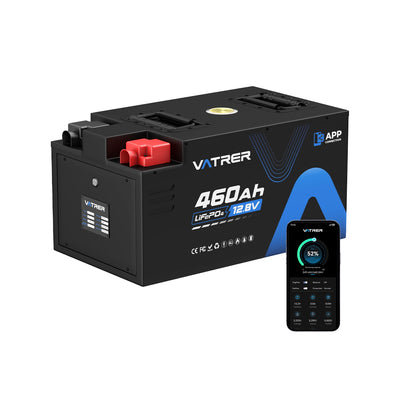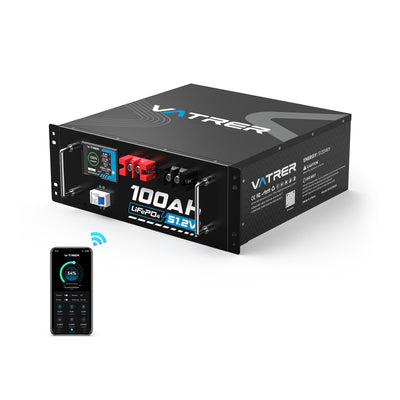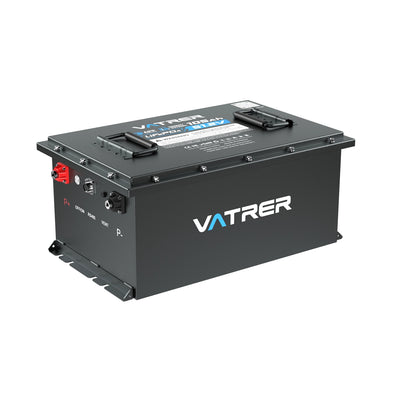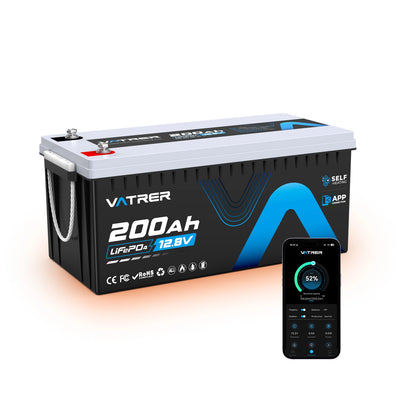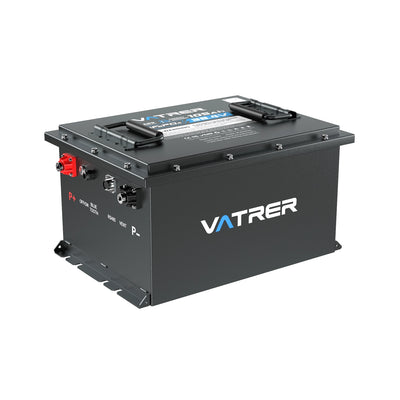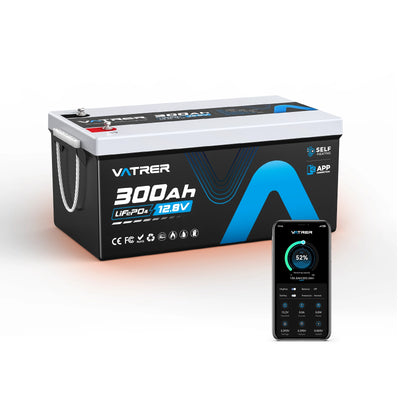
Can You Use a Lithium Battery On a Yamaha Outboard?
When you’re gearing up for a day on the water with your Yamaha outboard, you might be tempted to swap your heavy lead-acid battery for a lighter lithium one, especially after searching for “Yamaha lithium battery” solutions. Picture this: you’re loading your Yamaha F150 for a fishing trip, hoping a sleek Vatrer lithium battery will save space and weight—only to face a no-start situation at the dock. The truth is, lithium batteries aren’t suitable for starting Yamaha outboards or most gasoline marine engines due to their power delivery limits and safety features. This guide explains why, using insights from Yamaha’s specs and real-world marine use, so you can avoid costly mistakes.

Why Yamaha Outboards Need More Than a Lithium Battery for Starting
Yamaha outboards, like the popular F115, F150, or T60 models, demand batteries that deliver a high burst of power—known as cold cranking amps (CCA)—to start reliably. According to Yamaha’s 2023 outboard manuals, these engines require 12V batteries with 500-700A CCA, with peak currents spiking to 1000A for 2-3 seconds during startup. This is especially critical in chilly waters below 10°C, where engine resistance increases by up to 20%, per marine technician reports cited in BoatUS guides.
Lead-acid batteries, such as absorbed glass mat (AGM) or flooded types, are Yamaha’s recommended choice because they maintain stable voltage under these intense loads. In contrast, lithium batteries, even high-quality ones like the Vatrer lithium battery, struggle to meet this demand. Their design prioritizes steady, long-term energy release over short, high-amp bursts. Another issue is compatibility: Yamaha’s charging systems are optimized for lead-acid batteries, potentially undercharging lithium without a DC-DC converter, which adds complexity and cost.
For boaters, this matters in real-world scenarios—think early mornings on a cold lake or long trips in salty coastal waters. A failed start isn’t just inconvenient; it could leave you stranded. Sticking to Yamaha’s battery specs ensures reliability and keeps your engine’s warranty intact.
Why Lithium Batteries Fail to Start Yamaha Outboards: Technical Limits
Lithium batteries, particularly LiFePO4 models popular in “Yamaha lithium battery” searches, have technical traits that clash with outboard cranking needs. Here’s why they fall short:
- High-Discharge Challenges: Lithium batteries excel at deep, steady discharges (like 80% capacity for electronics) but drop voltage rapidly under high loads. During a Yamaha's 500A+ cranking, voltage can sag below 10V, causing the starter solenoid to fail, per Battery University's lithium discharge studies.
- Battery Management System (BMS) Interruptions: The BMS in lithium batteries cuts power to prevent overheating or short-circuiting during extreme draws. For a Yamaha F150 pulling 600A, this safety feature can halt startup mid-crank, mimicking a dead battery.
- Cold Weather Weakness: At 0°C, lithium batteries lose 40-50% capacity due to slower ion movement, while AGM batteries retain 80% output, per Battery University's 2024 data. Cold starts in marine environments amplify this gap.
- Warranty Concerns: Yamaha's 2023 warranty terms require manufacturer-approved batteries, typically lead-acid. No lithium models are certified for starting, risking warranty disputes if issues arise.
To clarify these differences, here's a quick comparison of battery performance for Yamaha outboard starting:
| Feature | Lead-Acid (AGM) | Lithium (LiFePO4) |
|---|---|---|
| Cold Cranking Amps (CCA) | 500-800A sustained | 200-400A, quick drop |
| EMS Shutdown Risk | None | High during 500A+ load |
| Cold Weather Capacity | 80%+ at 0°C | 50-60% at 0°C or Built-in Low-temp Protection |
| Warranty Compliance | Yamaha-approved | Not certified |
Risks of Using a Yamaha Lithium Battery for Engine Starting
Using a lithium battery to start your Yamaha outboard can lead to frustrating and costly outcomes. Imagine you’re on a coastal trip with your Yamaha F200, and your lithium battery’s BMS trips during a cold start in 5°C saltwater conditions. Such failures are common because lithium can’t sustain the high-amp burst needed.
Beyond stranding you, there are financial hits. Replacing a failed lithium battery costs $500-$800, compared to $150-$300 for a lead-acid swap. Towing fees add another $200-$500, per BoatUS estimates. While rare, overstressing a lithium battery's cells during repeated cranking attempts can overheat electronics, potentially damaging your boat's wiring.
Most critically, using a non-approved battery risks your Yamaha warranty. The 2023 warranty terms state that engine damage from unapproved components, including batteries, may not be covered. Why take the chance when safer options exist?
Best Battery Options for Yamaha Outboards and Marine Power
For starting your Yamaha outboard, stick with a lead-acid battery (AGM or flooded) matched to your model's group size and CCA requirements—check your manual for specifics (like Group 24M with 600A CCA for an F115). These batteries are reliable, affordable, and Yamaha-approved.
However, lithium batteries shine for auxiliary marine systems, like powering fish finders, LED lights, or trolling motors. Here, a Vatrer lithium battery offers clear advantages: lighter weight, deeper discharge and longer lifespan.
Vatrer marine battery with grad-A cells and IP65 waterproofing for saltwater durability, is a top choice for boaters. Its Bluetooth monitoring lets you track charge levels on long trips, saving you from unexpected power drops.
To combine both, use a hybrid setup: a lead-acid battery for starting and a Vatrer lithium battery for house loads, wired through a 10-20A marine-grade DC-DC charger to prevent charging conflicts. Consult a marine electrician for proper isolation and setup. Here's a snapshot of Vatrer's marine-ready options:
| Vatrer Battery Model | Capacity | Weight | Use Case |
|---|---|---|---|
| 12V 100Ah LiFePO4 | 100Ah | 22 lbs | Trolling motor, lighting |
| 36V 50Ah LiFePO4 | 50Ah | 33 lbs | Fish finders, small loads |
This approach maximizes reliability and efficiency, letting you leverage Vatrer's lightweight power without risking your Yamaha's performance.
Conclusion
Lithium batteries aren’t suited for starting Yamaha outboards due to their discharge limits, BMS protections, and cold-weather weaknesses—but they’re a game-changer for auxiliary marine power. Stick with lead-acid for cranking to ensure safety and warranty compliance, and consider a Vatrer lithium battery for electronics or trolling motors to lighten your load and extend runtime.
FAQs
How Can I Extend the Life of My Lead-Acid Battery for Yamaha Outboard Starting?
To keep your Yamaha outboard's lead-acid battery (AGM or flooded) performing reliably, follow these maintenance tips tailored for marine environments.
- First, check electrolyte levels monthly in flooded batteries, topping off with distilled water if low, as saltwater exposure can accelerate evaporation (per ABYC E-10 standards).
- For AGM batteries, inspect terminals for corrosion and clean with a baking soda solution, as salt buildup is common in coastal use.
- Store your battery in a cool, dry place during off-season months to prevent sulfation, which reduces capacity by 20% annually if neglected, per Battery Council International.
- Use a smart charger (like a 10A marine-grade model) to maintain charge without overcharging, especially after long trips.
- Regular maintenance can extend lead-acid life to 3-5 years, saving you $150-$300 per replacement.
Can I Use a Vatrer Lithium Battery for My Yamaha's Trolling Motor Without a Hybrid Setup?
Yes, a Vatrer lithium battery, like the 12V 100Ah or 36V 50Ah LiFePO4 model, can power your Yamaha-compatible trolling motor directly, without needing a hybrid lead-acid setup, as long as it's isolated from the starting system. Trolling motors require steady, low-amp power (20-50A), which suits lithium's deep-discharge strength.
For instance, Vatrer's 36V 50Ah model supports a Minn Kota trolling motor for 4-6 hours at medium speed, weighing only 33 lbs compared to 80 lbs for equivalent lead-acid packs. Ensure your trolling motor's voltage matches (12V, 24V or 36V) and use a dedicated circuit with a marine-grade fuse to protect wiring, per NMMA guidelines.
Vatrer's IP65 waterproofing handles saltwater splashes, but avoid submersion. Check your Yamaha's manual for trolling motor specs, and visit Vatrer trolling motor battery lineup, these models are equipped with low-temperature protection and also offer Bluetooth monitoring and self-heating functions.
Are Vatrer Lithium Batteries Cost-Effective for My Yamaha's Auxiliary Systems Compared to Lead-Acid?
For auxiliary systems (like fish finders, lights, or pumps) on your Yamaha-powered boat, a Vatrer lithium battery offers long-term savings despite a higher upfront cost. Vatrer's 12V 100Ah LiFePO4 delivers 4000+ cycles compared to lead-acid's 500-800 cycles. This means fewer replacements, saving $300-$600 over a decade.
Factor in zero maintenance (no watering or corrosion checks) and Vatrer's IP65 rating for saltwater durability, and the investment pays off for frequent boaters.
What Safety Features Make Vatrer Lithium Batteries Reliable for Marine Auxiliary Use?
Vatrer lithium batteries are designed with marine-grade safety features, making them a reliable choice for powering auxiliary systems on your Yamaha-powered boat. Their LiFePO4 chemistry is inherently stable, with a lower thermal runaway risk than other lithium types, per UL 1973 standards. The built-in BMS monitors voltage, current, and temperature, preventing overcharge, over-discharge, or short-circuits during high-vibration boating conditions.
For example, Vatrer 12V 100Ah model includes IP65 waterproofing to resist saltwater spray and humidity, critical for coastal trips. Overcurrent protection (like 100A max discharge) ensures safe operation with heavy loads like trolling motors.
Share




























